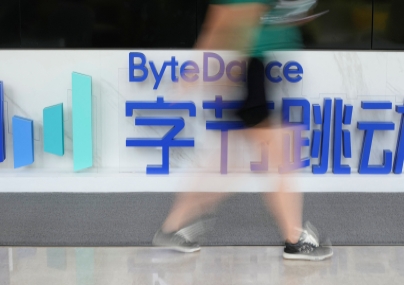
Skip to
Chinese firms have gone on a global buying spree in the past couple of years, encouraged by national policies such as the Belt and Road Initiative. However, at the same time, inbound mergers and acquisitions (M&A) still see an upward trend, although slower than before, as new attractive opportunities emerge in China for both local investors as well as those from overseas.
The year 2015 was a transformative year for M&A in China, as the country becomes a net capital exporter. During the first half of last year, China’s outbound M&A volume exceeded its inbound volume, with 382 deals worth US$67.4 billion by the year’s end.
Although inbound M&As have been outperformed by outbound transactions, it is still increasing steadily. By the end of October this year, 1,325 inbound M&A deals have taken place in China, slightly more than the 1,320 deals in the same period in 2015, according to numbers from Baker & McKenzie.
However, compared to its rapid increase in the past couple of years, five more deals could only be seen as a piecemeal increase. The number of inbound M&A deals in China increased 39 percent from 2010 to 2015, with total deal value increasing by approximately 141 percent.
Plus, there is a marginal drop in inbound deals with foreign bidders. In the first ten months of this year, overseas enterprises initiated 197 deals involving the merger with or the purchase of a local company in China while 205 such cases were seen in the same period in 2015.
“It is due in part to foreign apprehension about slower growth and China’s ostensibly complex regulatory framework surrounding acquisitions,” says Patrick Wang with T&C Law Firm.
China’s economy grew by 6.9 percent in 2015, the slowest rate in 25 years, as a result of an industrial glut, sagging property investment and weak foreign trade. The current consensus in the market regarding its GDP growth is about 6.7 percent.
Although the country did not see a hard landing of the economy this year, further slowdown is still a major concern for many foreign investors. Meanwhile, the Chinese currency has fallen to a nearly eight-year low against the greenback. The U.S. dollar was fetching as much as 6.86 yuan on Nov. 29, the weakest since January 2009, during the global financial crisis.
“In the past, both central government and local authorities tend to offer incentives and a relaxing framework to attract foreign capital to come and partner with local companies. It has changed as for the time being the direction is for deep-pocket Chinese enterprises to tap overseas markets and grasp shares globally. At the same time, we’ve seen new favoring policies to fuel up the development of domestic firms, particularly in hi-tech sectors. That is why we see the environment for foreign companies making purchases not as attractive as before,” says Wang.
One telling example is in the healthcare industry, where policies favoring local device makers, particularly those with innovative technologies, have been rolled out, including faster approval procedures and incentives to hospitals purchasing made-in-China devices.
“Why is seeing a doctor expensive for Chinese people? The reason is that 95 percent of patented drugs sold in China and 95 percent of medical devices we use are controlled by foreign companies,” said Qin Huaijin, chief of science, technology and education at the National Health and Family Planning Commission, at a recent conference. Qin emphasized the importance of fostering strong local drug and medical device makers.
Back to topNO RUSH
However, the slower increase of inbound M&As may not be bad news, according to Wang.
“After two to three decades since the foreign companies’ first purchase of Chinese firms, many of them have reached a stage where their presence in the Chinese market is pretty strong. They have taken a seat in the whole industrial chain of their sector, both upstream and downstream. There is no rush for them to acquire more counterparties; instead, it is more important to manage better and optimize their resources and adapt to the dynamic of the changing economic environment in China,” said Wang.
Howard Wu, a partner at Baker & McKenzie in Shanghai, echoes this perspective and highlights the activeness of the domestic market.
“The inbound regulatory regime has been relatively stable, and most of the rules have been in place for a good 5 to 10 years. The regime is complex and subject to policy changes, but our sense is that inbound investment is steady and probably will remain so,” said Wu. “This is the second largest economy in the world and most inbound investment is now geared towards the domestic market.”
The majority of M&A activities in China are domestic, making up 85 percent of all M&A transactions in the first ten months of 2016, according to Baker & Mckenzie.
China Petroleum Capital Corp. Ltd.’s US$11.3 billion spinoff to Jinan Diesel Engine Co. Ltd. and the US$8.7 billion merger between Wuhan Iron and Steel Corp. and Baoshan Iron & Steel Co., Ltd. were the biggest deals.
“Listed companies would like to keep the market, and their investors posted that they are in good shape and are seeking for growth. One way is to purchase companies with a good reputation,” says Zou Jun, partner with Guantao Law Firm. “At the same time, many private SMEs are looking for financing. Selling shares or being merged by larger enterprises or SOEs is usually a good option.”
Back to topACROSS INDUSTRIES
Another key driver observed by the lawyer is cross-industry M&As among Chinese companies.
“We’ve seen some property conglomerates start to dip their toes in the new business, such as healthcare as well as sports and leisure sectors, such as buying sports teams and companies that host marathons or cycling events. These are all emerging businesses fueled up by the growing middle class in China and their rising awareness of health,” says Zou. “Aging population has been a big issue and will continue to be the hotly discussed topic in the coming years. Compared to traditional industries, like property and heavy manufacturing, which see bubbles or red flags, the future of any industry and product related to health is promising.”
Zou pointed out that med tech, sports and leisure as well as innovative financial services have all been hot areas for deep-pocket domestic investors in the past couple of years. In 2014, Guantao Law Firm represented Hundsun Technologies Inc., a financial services software provider, in a deal between Hundsun and an investment vehicle owned by Jack Ma.
Hurdles come along with opportunities, though, and this is particularly critical to foreign investors buying Chinese companies as well as cross-industry M&As between local firms.
“The legal hurdles are mostly those involving the complexity of the regulatory regime governing such activities, where companies need to go through extensive government approvals, such as anti-trust and national security review, and there are limitations on the ability to do deals in the same way as offshore deals, as share swaps are still limited, and in practice they are rarely seen,” says Wu with Baker & Mackenzie.
Frictions are inevitable between different companies in different industries operating in the same jurisdiction, and lawyers should step in to smooth the procedure and avoid post-M&A adverse reactions, which sometimes could lead to the failure of the deal.
“The regulatory environment is quite different for different businesses, and the bidder company should pay attention to maintaining talents with relevant expertise to manage the new business; otherwise it is just an empty shell that you bought. Managing systems also vary a lot between SOEs and private enterprises,” says Zou.
Back to top

